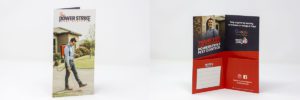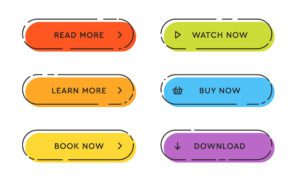
6 Brochure Design Considerations
What can you do to produce a brochure that your customers will want to keep for future reference? Have you ever been given a brochure that you immediately toss because it has no purpose? Anyone can design a brochure, but designing a brochure that will be useful and resourceful to customers is no easy task. The more useful a brochure is, the longer it will stay with your customer and that creates a greater chance of them passing it to other potential customers.
You are probably wondering how to create a brochure that will ensure a good response from your customers. Here are 6 tips you need to consider for a successful brochure.
Determine your purpose and customer
Before you spend time designing the brochure, have a clear vision of the purpose of your brochure and your target market. Identifying the purpose of your brochure and your target market will influence the design of your brochure. The most important questions you can ask yourself prior to designing are: What is the problem our product/service can solve for the customer? Why would our customers want to buy our product/service?
Think outside the typical tri-fold brochure
You may not get much response if you have the typical brochure that doesn’t stand out. The way your brochure is folded will determine your content presentation. Use the folding of your brochure to your advantage with an out of the box design, while still having a professional and well designed layout.

Review your design
Review your design as if you were your customer. Not only do you need to review your wording, but also you design. Your brochure content must be written in a way that is short and sweet. You must give your most valuable information in a little amount of space. Your goal is to sell not tell. Are you giving enough information and context, or is the content confusing? Having too much much text is not enticing to a reader.
Use high resolution pictures
Your brochure will look unprofessional if you see stock photos that are all over the internet and other company’s print products. It will also look unprofessional with blurry low resolution photos. To ensure a professional design with photos, hire a professional photographer to photograph your products and your employees in a natural setting. This will give you content for your brochure and other print products. If you must use stock photos, choose images that don’t look like stock photos. Arrange your images in an appealing way.

Choose your paper wisely
Not only does your paper choice determine the durability of the brochure, but it also can give your customers a perception of your company. Thick paper with a glossy or matte finish will show your customers that you take pride in your product or service. Your paper will also affect the durability. Thick paper will last longer and a coating will keep the colors from smudging when it is being used and possibly passed on to other customers.
Incorporate a call to action
Include a statement that will lead your customers back to you. This is the section where you point your customers to an intended action – which might be going to your website, checking out your products, or taking advantage of your discounts. Be specific and make your call to action very visible to your customer. Write it in a bigger font with white space around to make it stand out. Offer a coupon or a promotion to encourage your customers to take action after reading your brochure.




